Sometimes one stumbles across a treasure by chance, and these surprise packages are the most exciting ones. This happened to me in Ahmedabad where we were staying for 2-3 days to attend a wedding this April, my first real rendezvous with the city since a brief trip to Adalaj years ago.
The summer was already at its peak and puny Punekars like us were feeling the heat quite literally. Ekta decided to escape to Baroda, which happens to be her hometown; and left to myself, I decided to do some sightseeing. Since it was almost impossible to venture out during the day time, I decided to wake up at 5:30 AM and explore the city before the sun rose high in the sky.
One iconic monument that resembles Ahmedabad is the Jama Masjid, and this was my first choice to start the day with. So I hailed a cab, entered Jama Masjid as the destination and started the adventures of the day.
It was only when we reached our place and the cab left after dropping me off, did I realise that a mess up had happened with the address. Apparently, there are two Jama Masjids in the city; and while the one that I was seeking was in the old city near Bhadra Fort, the one I had reached was at Sarkhej. There was some initial disappointment, but then I thought ‘what the heck, let’s explore this place as well!’ It turned out to be a very good decision, for I was introduced to this hidden gem of a place which hitherto unknown to me earlier.
An elderly gentleman was watering the plants at the gate and I stopped to ask him about this place. He very kindly gave me a guided tour of the whole complex, explaining its history and significance before leaving me alone to take photographs at my leisure.
History of Sarkhej Roza
Sarkhej Roza is a mosque and tomb complex in the Makarba village, now in Ahmedabad. Shaikh Ahmed Khattu Ganj Bakhsh, one of the earliest Sufi Saints of Gujarat, came and settled here in the later years of his life and died here in 1445 AD. Sultan Muhammad Shah II started building a tomb dedicated to the saint and a mosque; his work was finished by his son Qutbuddin Ahmed Shah II in 1451 AD. The next Sultan Mehmud Begda was so fond of this place that he had massive extension done to the place, including the Sarkhej lake, a palace, and mausoleum for himself and his family. By 17th century AD, it had become a very important centre for Sufi Islam, so unique in its value and architecture that it was called the “Acropolis of Ahmedabad”.
The Mausoleum of Kings and Queens
The architectural style of Sarkhej Roza is an elegant mix of Islamic and Hindu architectures, evident from its composite Indo-Saracenic style. As one moves around in the sprawling complex, one can clearly witness an amalgamation of Hindu craftsmanship and Islamic sense of geometry and scale.
As I entered the monument, the first building to my left was the tomb of Sultans of Gujarat dating back to 14th and 15th centuries. Mehmud Begda, Muzaffar Shah II and Mehmud Shah III lay in eternal sleep in a elegant mausoleum adorned with carved pillars and intricate jaalis.
Separated from the Kings’ chambers is a tiny museum and library, showcasing information about the complex and has some ancient copies of the Holy Quran. This was actually part of the Queens’ chambers and houses the tombs of the queens, most notable of them being Bibi Rajabai, queen of Sultan Muzaffar Shah II. From the windows of the Queens’ chambers, one can see the lake (now dry) and remains of a once beautiful palace pavilion built by Sultan Mehmud Begda.
Jama Masjid
“Its beauty is due to its chaste simplicity and classic restraint: and indeed considered on its merit as a pillared hall, it is difficult to imagine how it could have been improved upon.”
– Sir John Marshall, Director General, Archaeological Survey of India (1902-1928)
The Jama Masjid of Sarkhej Roza, in sharp contrast to its namesake in the old city, will surprise you with its simple elegance. In appearance and architecture, it is a simple pillared hall, with domes of uniform height and minarets are conspicuous by their absence. The mosque complex has a prayer hall, an open courtyard between the prayer hall and the main entrance and galleries on three sides for walking and praying. The larger domes are five in number, and supported by 120 similarly carved pillars. Unlike the mosques of Champaner, this one was never abandoned and regular daily prayers happen here.
The southern part of the mosque overlooks the lake and pavilion and I was able to take some good photographs from this vantage point. The lake cut a sorry face though since it was totally dry. The palace on the other side of the lake had a similar run down look to it, with plastic cement sacks stored in the rooms and I decided against walking all the way to there in hot sun and then get heartbroken by the its condition.
Ganj Baksh’s Tomb
Adjacent to the Jama Masjid is the dargaah (tomb) of Shaikh Ahmed Khattu Ganj Bakhsh. This huge monument is built on a raised platform and in the same composite style as the other buildings. It has a large central dome, surrounded by many smaller domes and the walls are adorned with intricate stonework of the same fashion that we see in the Jain temples of Rajasthan and Gujarat. The shrine was alive with activity and I went inside to pay my respect to the Saint. It is important to take off the shoes and cover the head with a piece of cloth before getting in.
There is a sixteen pillared pavilion, called Baradari in front of the tomb. It is said that the initial construction of the mosque and the excavation of the lake was supervised by the Sufi saint himself, sitting in the Baradari.
Sarkhej Roza does not belong to a particular community or sect, it is our collective heritage and needs to be respected as such. It is not just another monument built of brick and mortar centuries back and now lying abandoned, but a living ecosystem of religion and spirituality which needs to be protected and nurtured. In the hullabaloo of the metropolis, this island of tranquillity provides a unique opportunity to come to terms with oneself and experience peace.
From what I learned from the information board, the monument is under threat from the rapid urbanisation of Ahmedabad, encroachment and general public apathy. It will a shame to see this beautiful monument fall under the onslaught of ‘modern civilization’.

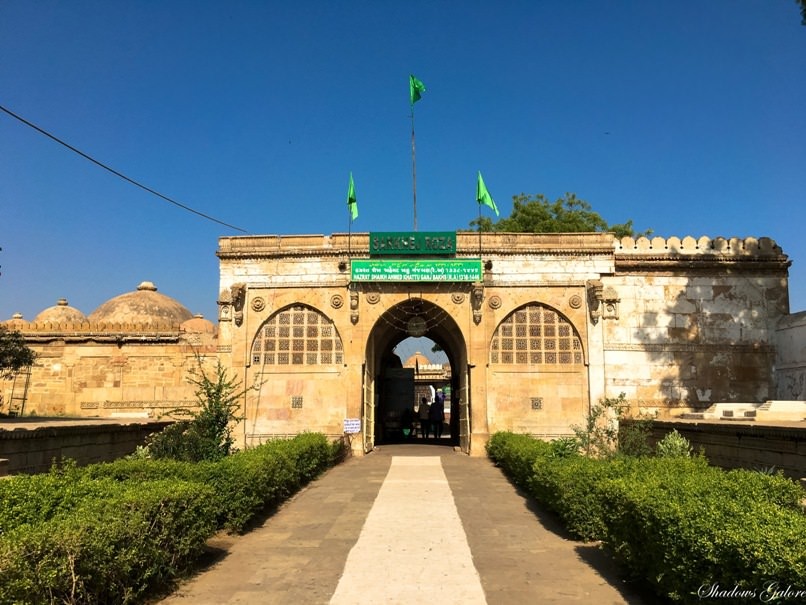
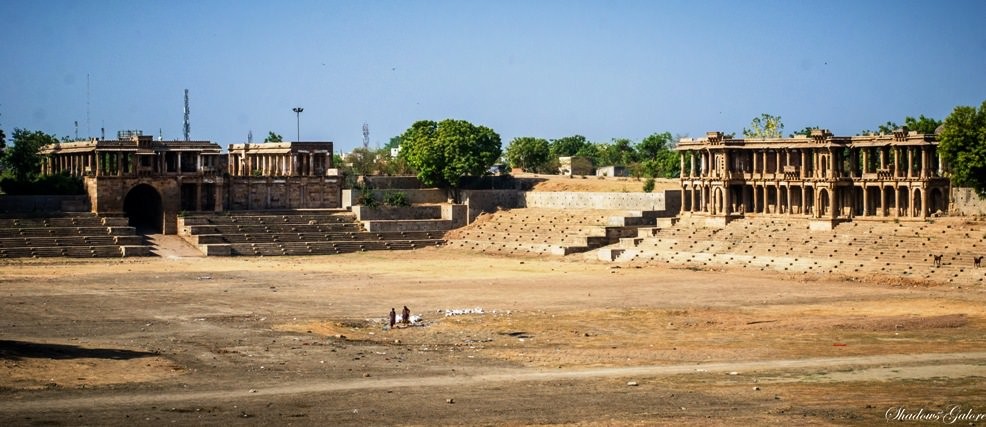
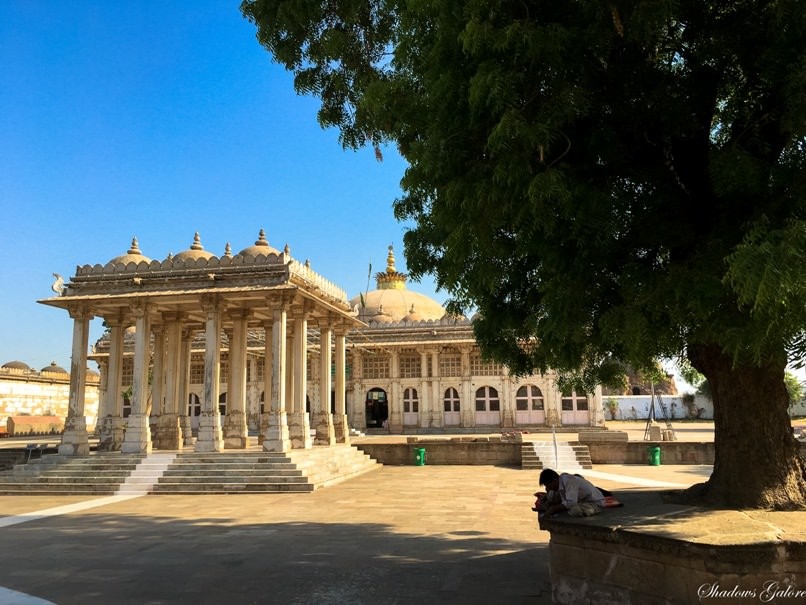
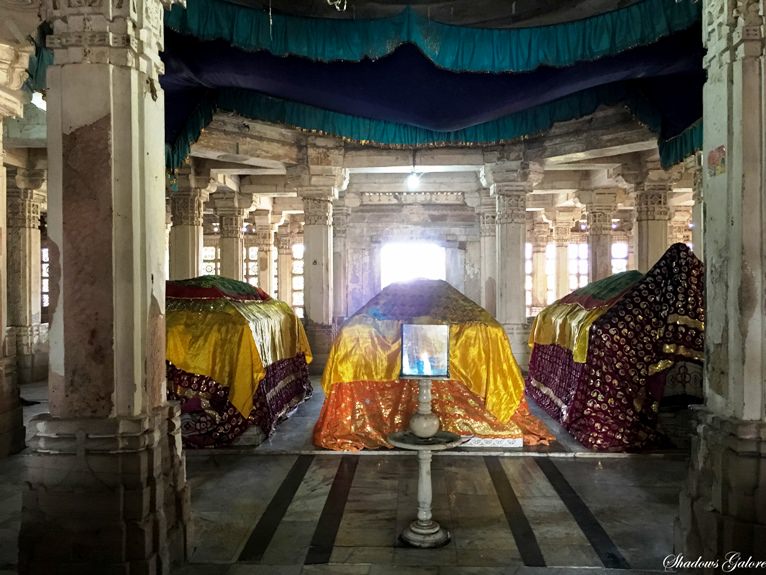
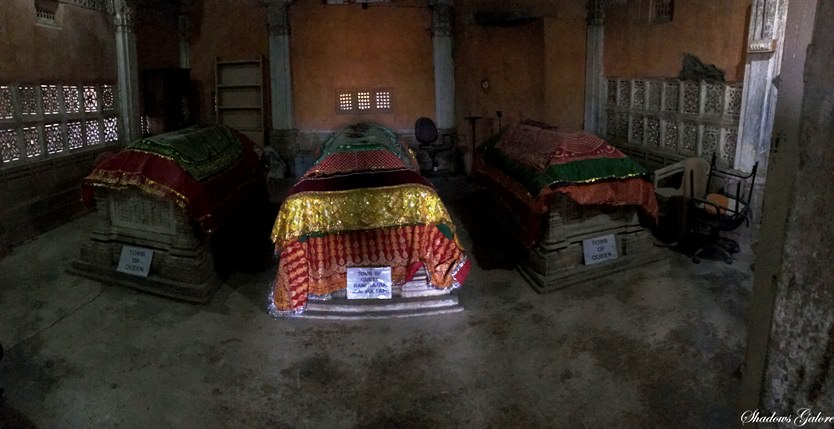
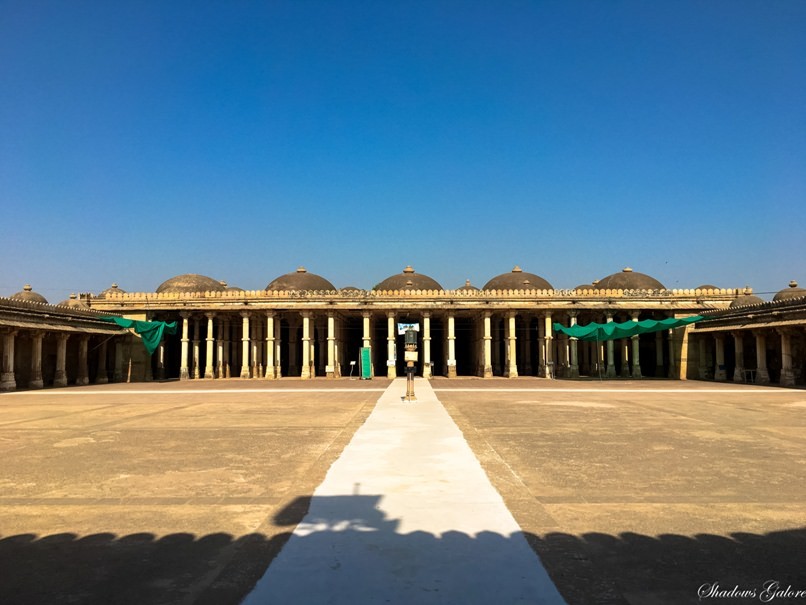
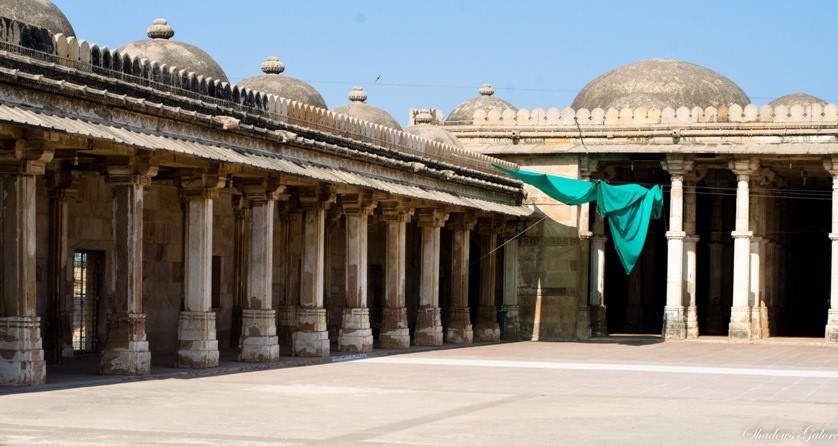
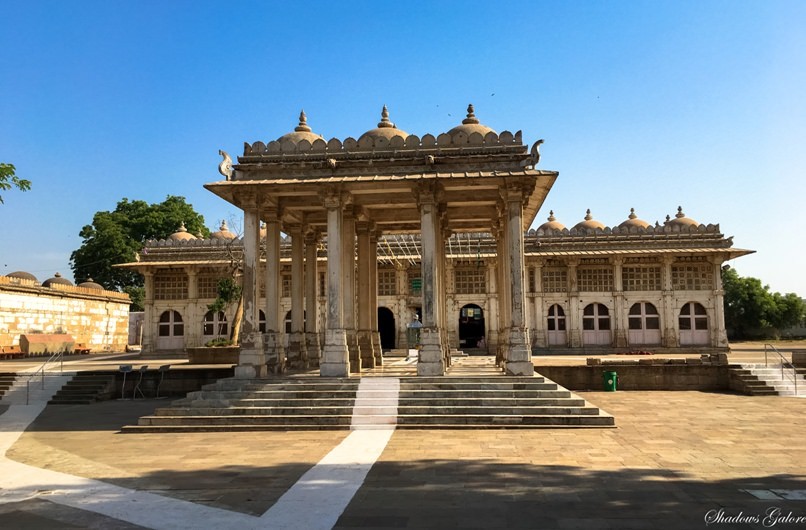
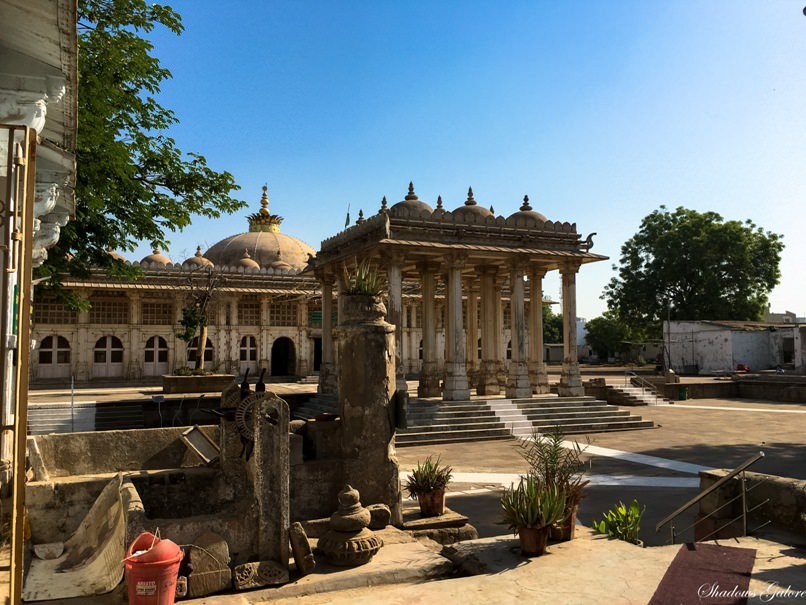
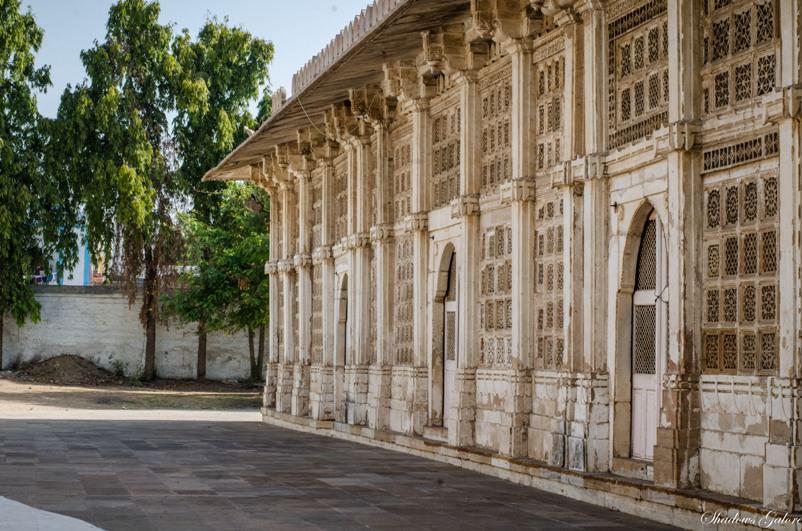
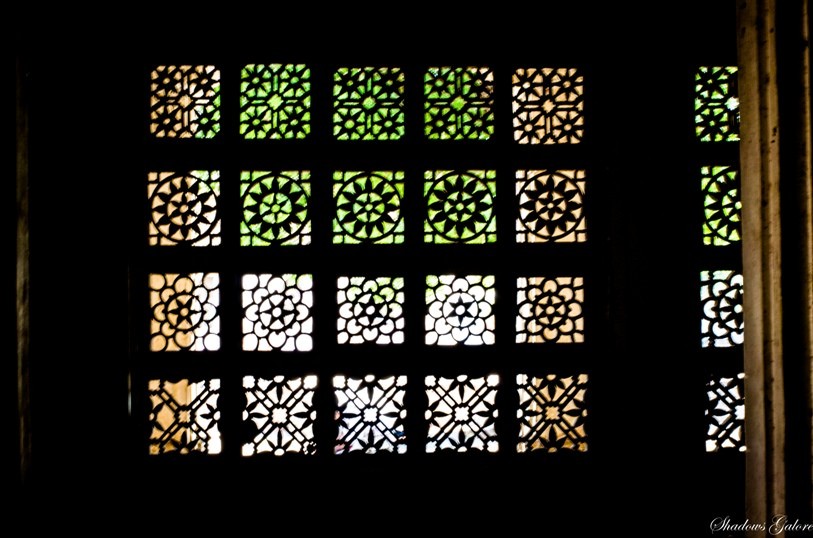
Amazing pics
Great info.. Will surely stop by at this place.. so far.. I have been visiting the step wells of Ahmedabad, impressed by the design and carvings on walls. Now you exposed me to new place.. thanks.